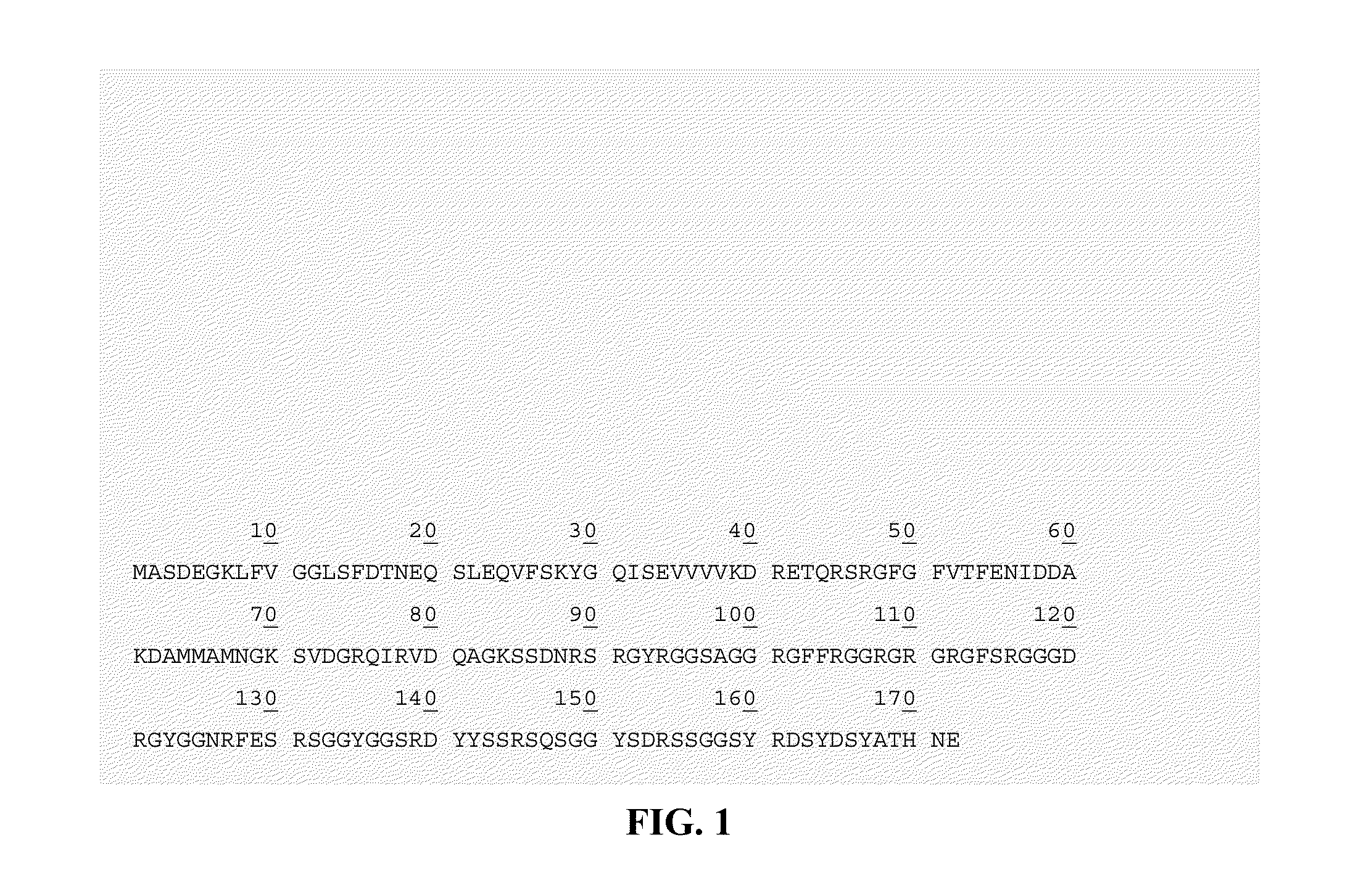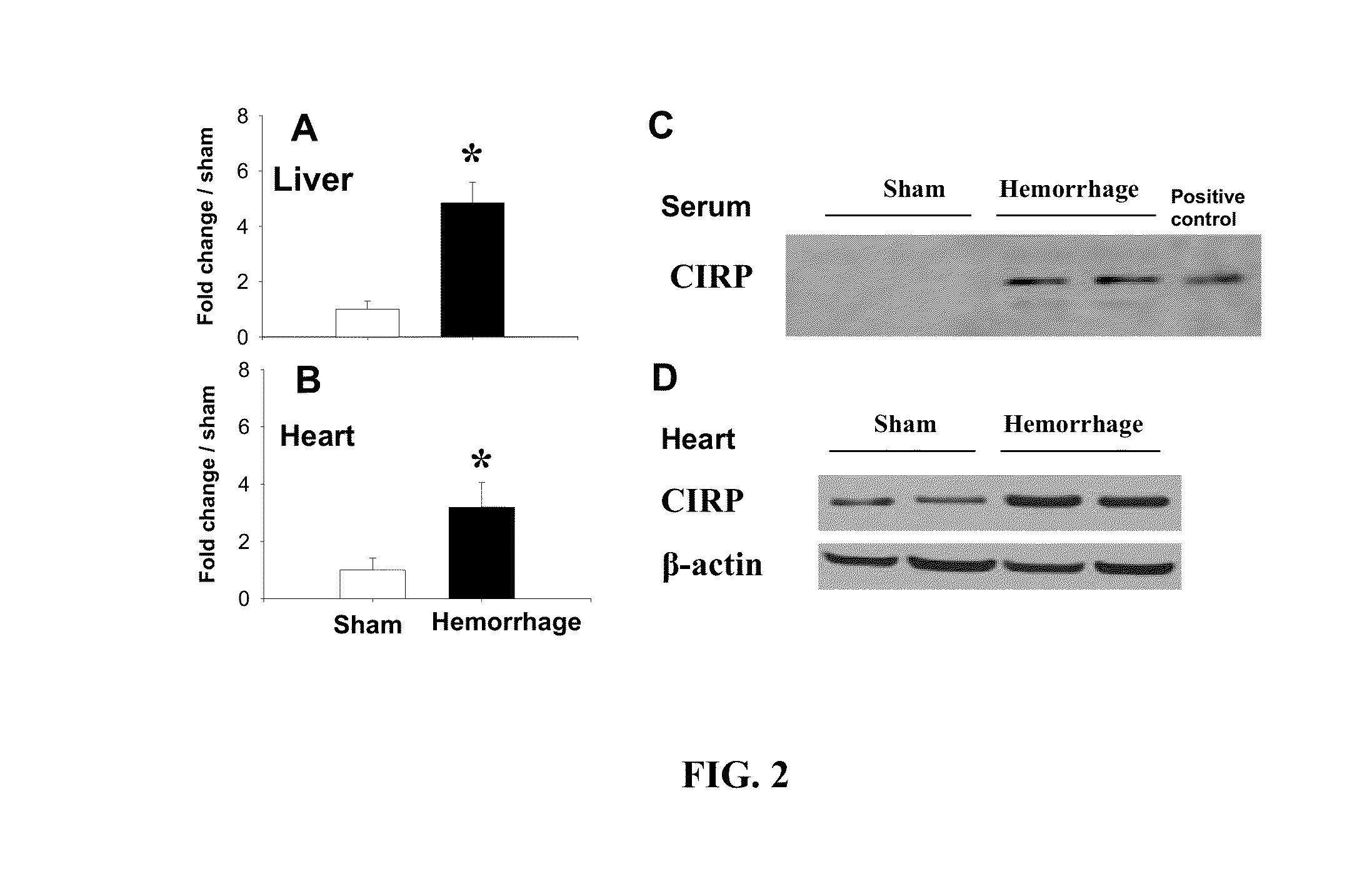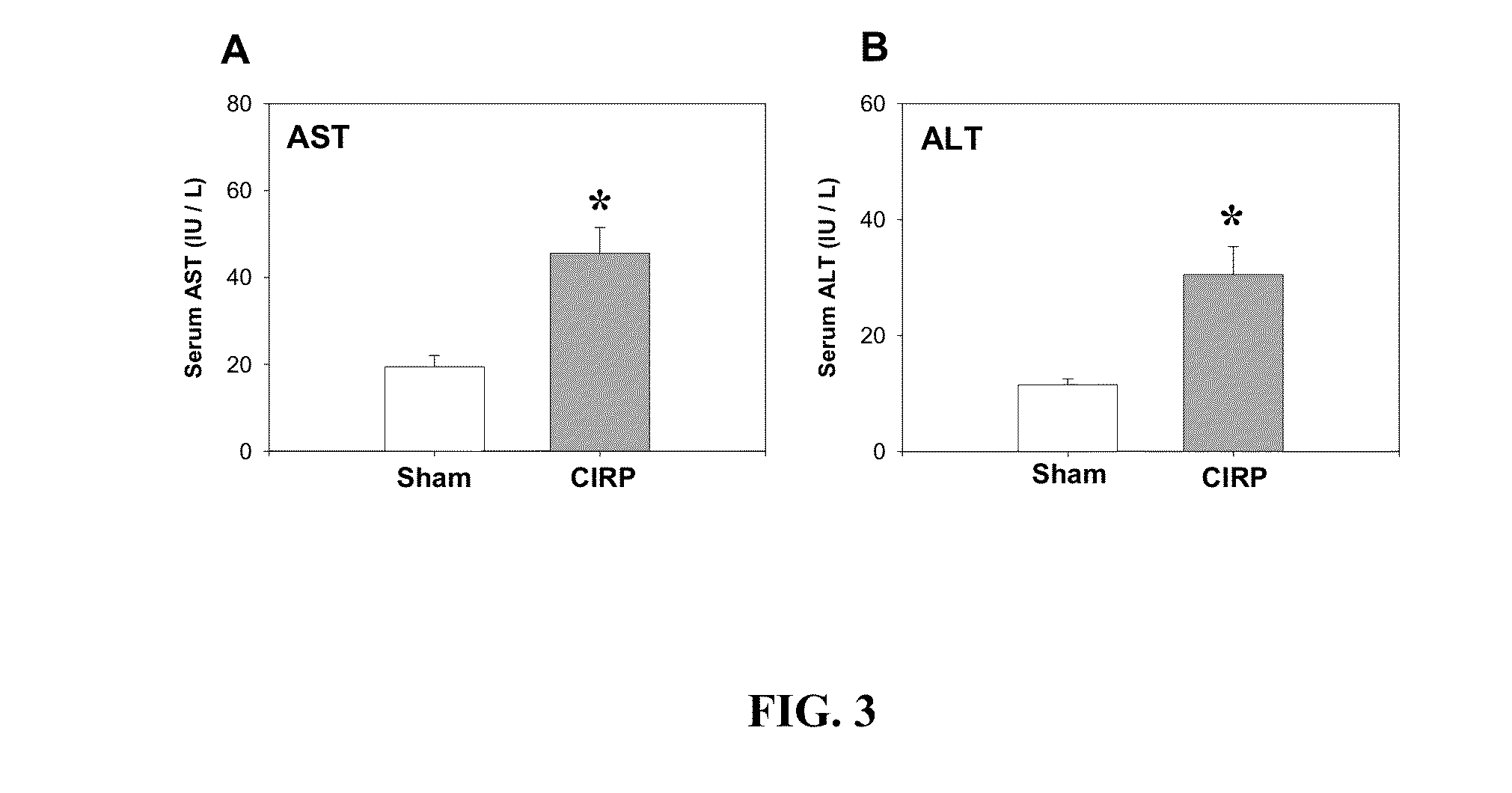Treatment of cutaneous wounds by inhibiting cold shock proteins
a technology of cold shock protein and cutaneous wound, which is applied in the direction of antibody medical ingredients, peptide/protein ingredients, peptides, etc., can solve the problems of non-healing wounds still a significant clinical problem, significant morbidity and mortality, and inability to effectively treat and manage chronic wounds, so as to advance the understanding and control of wound healing and accelerate wound healing
- Summary
- Abstract
- Description
- Claims
- Application Information
AI Technical Summary
Benefits of technology
Problems solved by technology
Method used
Image
Examples
example 1
Anti-CIRP Antibody is Effective to Inhibit Biological Activity of CIRP
Materials and Methods
[0073]Experimental animals: Male Sprague-Dawley rats (275-325 g in body weight) were obtained from Charles River Laboratories (Wilmington, Mass.), and were housed in a temperature-controlled room on a 12-h light / dark cycle and fed on a standard Purina rat chow diet. Prior to the induction of hemorrhage shock, rats were fasted overnight but allowed water ad libitum. The experiments were performed in accordance with the National Institutes of Health guidelines for the use of experimental animals. This project was approved by the Institutional Animal Care and Use Committee (IACUC) of The Feinstein Research Institute for Medical Research.
[0074]Animal model of hemorrhage shock: The model of hemorrhage shock used in this experiment was described in detail previously with minor modification (Wang P, Hauptman J G, Chaudry I H: Hemorrhage produces depression in microvascular blood flow which persists d...
example 2
CIRP-null Mice have a Faster Wound Closure Rate than Wild Type Mice
[0093]To identify the involvement of CIRP in wound healing, an animal model of cutaneous wound was used to compare the rate of wound closure between wild-type (WT) and CIRP-null mice. The detail procedure and measurements were as follows. Full-thickness 2.0-cm diameter circular excision wounds were surgically created on the dorsum of both 3 month-old male CIRP-null and WT mice. The size of the wound was measured until day 14 post wounding and quantified by NIH ImageJ software. Another two sets of animals were euthanized at days 3 and 7 and full thickness skin samples were collected for histological evaluation and measurements of the expression of various genes by real time RT-PCR.
[0094]As shown in FIG. 9, the healing rate of cutaneous wounds in CIRP-null mice was significantly faster than that in WT mice over the 14-day time course.
[0095]Histological analyses with H&E and Masson-Trichrome staining indicated that CIRP...
PUM
| Property | Measurement | Unit |
|---|---|---|
| Mass | aaaaa | aaaaa |
| Molecular weight | aaaaa | aaaaa |
| Biological properties | aaaaa | aaaaa |
Abstract
Description
Claims
Application Information
 Login to View More
Login to View More - R&D
- Intellectual Property
- Life Sciences
- Materials
- Tech Scout
- Unparalleled Data Quality
- Higher Quality Content
- 60% Fewer Hallucinations
Browse by: Latest US Patents, China's latest patents, Technical Efficacy Thesaurus, Application Domain, Technology Topic, Popular Technical Reports.
© 2025 PatSnap. All rights reserved.Legal|Privacy policy|Modern Slavery Act Transparency Statement|Sitemap|About US| Contact US: help@patsnap.com



